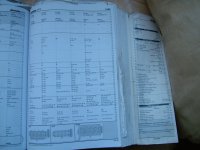Billycamper
Member
- Joined
- Jun 29, 2021
- Messages
- 22
- Points
- 56
I have a 2003 ducato maxi and the front wheel bearing has collapsed.
Upon stripping it down I noticed the hub slid straight out of the bearing no problem and the hub is also loose in the new bearing .
From past experiences i thought the hub was meant to be pressed into the bearing after the bearing is pressed into the hub. Otherwise the only thing holding my wheel on would be the driveshaft nut?
Can anyone shed some light into the situation thanks
Upon stripping it down I noticed the hub slid straight out of the bearing no problem and the hub is also loose in the new bearing .
From past experiences i thought the hub was meant to be pressed into the bearing after the bearing is pressed into the hub. Otherwise the only thing holding my wheel on would be the driveshaft nut?
Can anyone shed some light into the situation thanks



